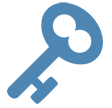Chapter 8.5: Review and Exercise
Chapter Review
Below is an abbreviated summary of the key takeaways for each section of this chapter.
Key Takeaways
 As you begin the process of finding and applying for employment in your chosen field, it is important to take stock of your education, technical skills, and the experiences and characteristics that make you an ideal employee and co-worker.
As you begin the process of finding and applying for employment in your chosen field, it is important to take stock of your education, technical skills, and the experiences and characteristics that make you an ideal employee and co-worker.- “Soft” skills are consistently ranked high on employer lists of desired attributes and include organizational skills, leadership abilities, teamwork experience, communication skills, problem solving, meeting deadlines, and so on.
- A resume is a document that summarizes your education, skills, talents, employment history, and experiences in a clear and concise format for potential employers.
- A resume represents your relevant professional information in writing.
- A resume demonstrates the relationship between your professional information and the problem or challenge the potential employer hopes to solve or address, often represented in the form of a job description or duties.
- A resume is used to get you an interview by clearly demonstrating you meet the minimum qualifications and have the professional background help the organization meet its goals.
- A cover letter is a formal letter that accompanies your resume when you apply for a position.
- It can be helpful to think about writing your cover letter in sections or “blocks.” This provides a basic structure for the letter
- A cover letter should contain an introductory paragraph, education & academics paragraph(s), employment paragraph (if applicable), other qualifications (if applicable), and a concluding paragraph.
- Employment interviews come in all shapes and sizes, and may not be limited to only one exchange but one interaction.
- There is no one right or wrong way to prepare and present at your interview, just as each audience is unique, but you can prepare and anticipate several common elements.
- We can use the dynamics of the ritual of conversation to learn to prepare for employment interviews and evaluations, both common contexts of communication in the work environment.
- Employment interviews involve preparation, performance, and feedback
Exercises
 Think about an application package you have recently submitted that didn’t get you the desired result (you were not invited to an interview). Based on the information presented in this chapter, what do you think you could have done better to secure an interview?
Think about an application package you have recently submitted that didn’t get you the desired result (you were not invited to an interview). Based on the information presented in this chapter, what do you think you could have done better to secure an interview?- Type “weird interview questions” in your internet browser and see what comes up. You might find questions such as, “If you were a tree, what kind of tree would you be?” (Or: if you were an animal, a fruit, etc.), or, “If you came across a genie who could grant you any wish, what would you ask for?” Why do you think potential employers might ask such questions? How do you think you should approach them?

